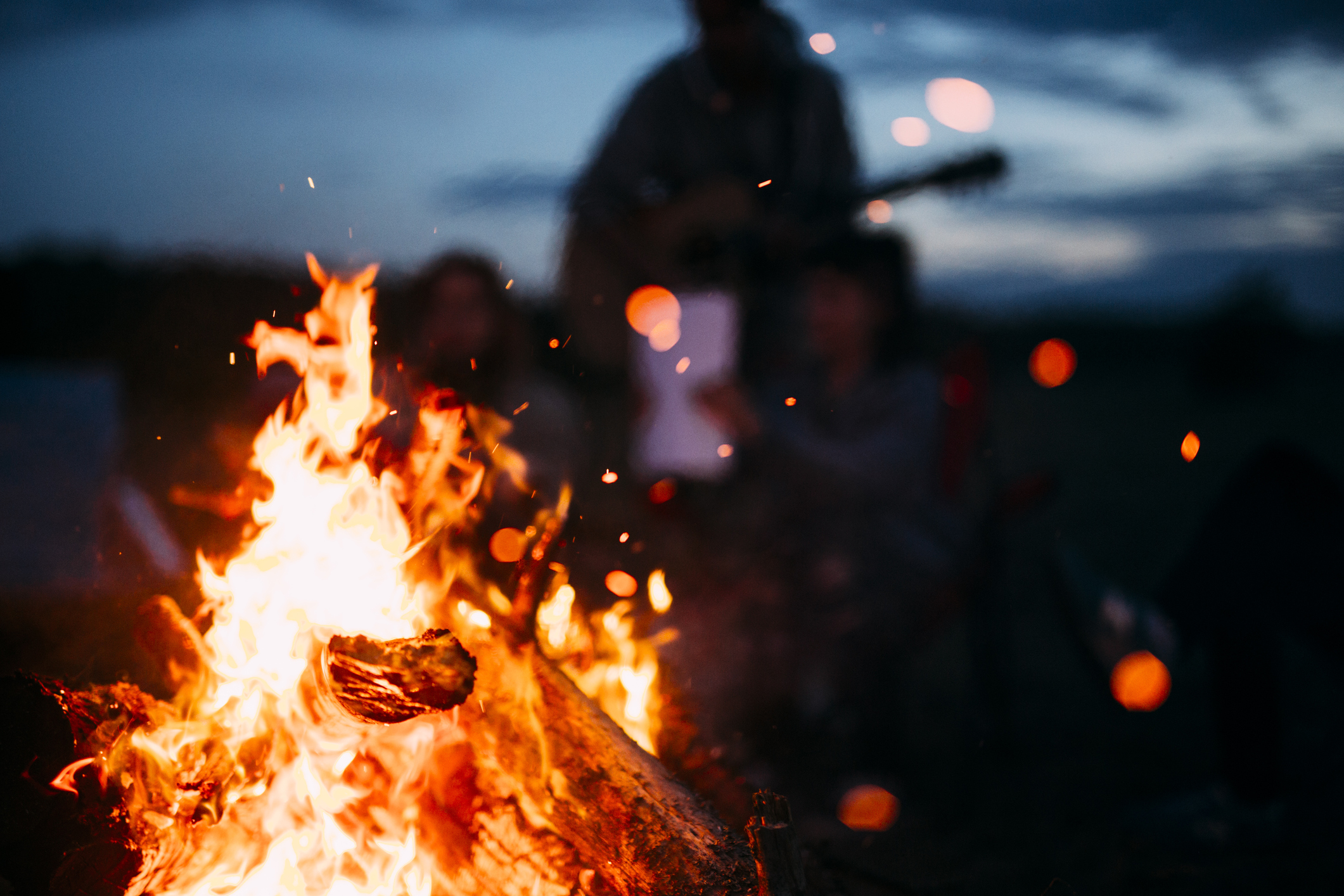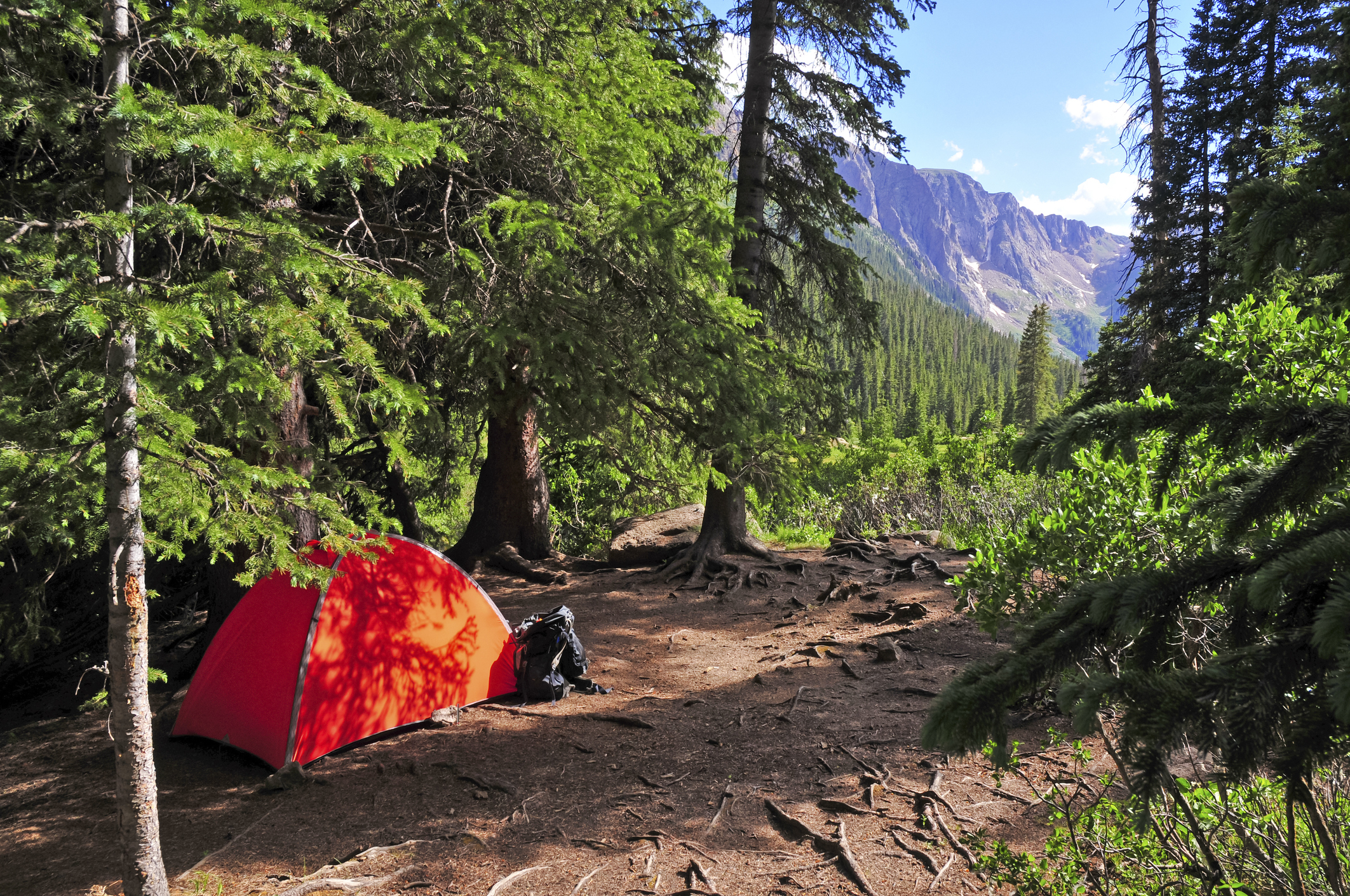It’s the time of year when the snow melts and the weather warms up in the mountains. It’s summer and it is the best time to spend a night or two underneath the stars in the great outdoors. Of course established campsites can fill up quickly — especially in popular areas — and can be a bit pricey. Plus, some sites are packed so tight it’s easy to forget you’re in the wilderness.
There is another option — dispersed camping. Dispersed camping is free camping on public land anywhere outside of an established campground. Learn how to take back the overnight wilderness experience with this complete guide to Colorado’s dispersed camping.
Where to Camp
Click here if the map is not displaying correctly.
The first step is finding your campsite. Dispersed camping is allowed in Bureau of Land Management areas and national forests. Sometimes camping is allowed in Wildlife Management areas and state forests. Look for forest signs and service roads to find camping spots. Most areas usually have signs if camping is not allowed. Keep in mind, where overnight parking is not allowed camping is not allowed.
When finding a campsite there are a couple things to keep in mind. Campsites must be 100 feet from any stream and 150 feet from any roadway. Cars must stay on designated roads. Try to keep tents on level, clear spots to preserve the flora as best as possible. Stick to spots worn down by past campers if available.
Here’s a short list of tried and true camping spots in Colorado, that were either tried by us or recommended by a reliable source.
Gordon Gulch Dispersed Area — Nederland
Guanella Pass — Georgetown
Jones Pass Road — Marshall
West Magnolia — Nederland
Bill Moore Lake — Empire
Lost Lake — Nederland
Kingston Peak — Idaho Springs
Creedmore Lakes — Red Feather Lakes
Montezuma Road — Keystone
Rabbit Ears Pass — Steamboat Springs
Echo Lake— Idaho Springs
Cottonwood Lake — Buena Vista
Rabbit Valley — Fruita
Natural Arch — Del Norte
Homestake Reservoir- Leadville
Vasquez Creek — Winter Park
You can also camp in most places in these national forests (also included on the map above)
- Arapaho National Forest
- Grand Mesa National Forest
- Gunnison National Forest
- Pike National Forest
- Rio Grande National Forest
- Roosevelt National Forest
- Routt National Forest
- San Isabel National Forest
- San Juan National Forest
- Uncompahgre National Forest
- White River National Forest
If all else fails and you just need a free campground, this is a great resource.
Tips for Dispersed Camping
Waste Management
One of the things to be aware of when dispersed camping is the lack of amenities. There are no toilets and no running water. Bring plenty of water with you or be sure to treat water from natural sources. When you have to take care of business dig a hole about six inches down in the dirt and fill it back in when you’re done.
Everything packed in must be packed out. Consolidate food to minimize packaging. Be prepared to pack out trash, food, toilet paper and anything else you bring along.
When in doubt follow the seven principles of Leave No Trace.
1. Plan ahead and prepare
2. Travel and camp on durable surfaces
3. Dispose of waste properly
4. Leave what you find
5. Minimize campfire impacts
6. Respect wildlife
7. Be considerate of other visitors
Campfires

The highlight of every camping trip is roasting marshmallows around a campfire. But as anyone who lives in Colorado knows, it can be very dry. That often means there are fire bans in effect. Make sure to check here before you leave for your trip to see if there’s a ban in the area you plan on camping. If campfires are allowed use an existing fire pit if possible. Scope out the area around you for wood and look for anything that is downed or dead to burn.
Visit the US Forest Service website for more information on dispersed camping and maps of service roads. Check out this map to find other great camping spots in State Wildlife areas.






Why would you post this, now these spots are going to get even more traffic, and even more dumbasses that don’t know how to take care of the wilderness!!!
Irresponsible!
get over yourself. Maybe go buy a new “native” bumper sticker and that will put you in a better mood.
hahaha
I love you for this.
Trashman.. WTH?
There are much better ways to communicate your concerns.
It’s great that you care for the wilderness but keep it positive and consider joining forces with conservation groups and do some volunteering. Don’t insult an intern who is doing her job (and IMO, wrote a great article). This is a magazine after all.. it’s purpose is to share information.
Thank you for posting! My father was a real outdoorsman and I love the wilderness and outdoors but did not know where to go dispersed camping. I prefer that to a campground. The comment above by Trashman really upsets me. It’s very greedy and disheartening. For some reason when I think of people who love the outdoors, I think of people who are kind and who show people the same respect they show the environment (and vice versa). If you encounter someone who is not respectful of the environment, it seems you might show them or teach them rather than call them a dumbass. And do people who really have no respect for the environment want to go disbursed camping anyways? Thanks again!
Hi, I come in from out of state to camp over the summer. I prefer dispersed camping areas. I am a pack it in, pack it out girl but there don’t seem to be any places to properly dispose of the waste that I pack out. My issue is that all of the dumpsters are locked and being a non-resident I am assuming that I am not allowed to use the landfills to properly dispose of waste. Can you tell me where I can put my trash bags after I pack my waste out?
Hi!
The answer really depends on where you’re camping so we suggest doing research of the specific area and maybe calling a nearby ranger station in that area for more help. Some areas have bear proof dumpsters that may appear to be locked but are not. So double check them as well.
Which areas are most likely to have cellular? I’m doing a bunch of teacher PD and would like to minimize my trips into the cities.
Hi! It depends on your service provider for your phone so I’d look at their coverage maps to get an idea.